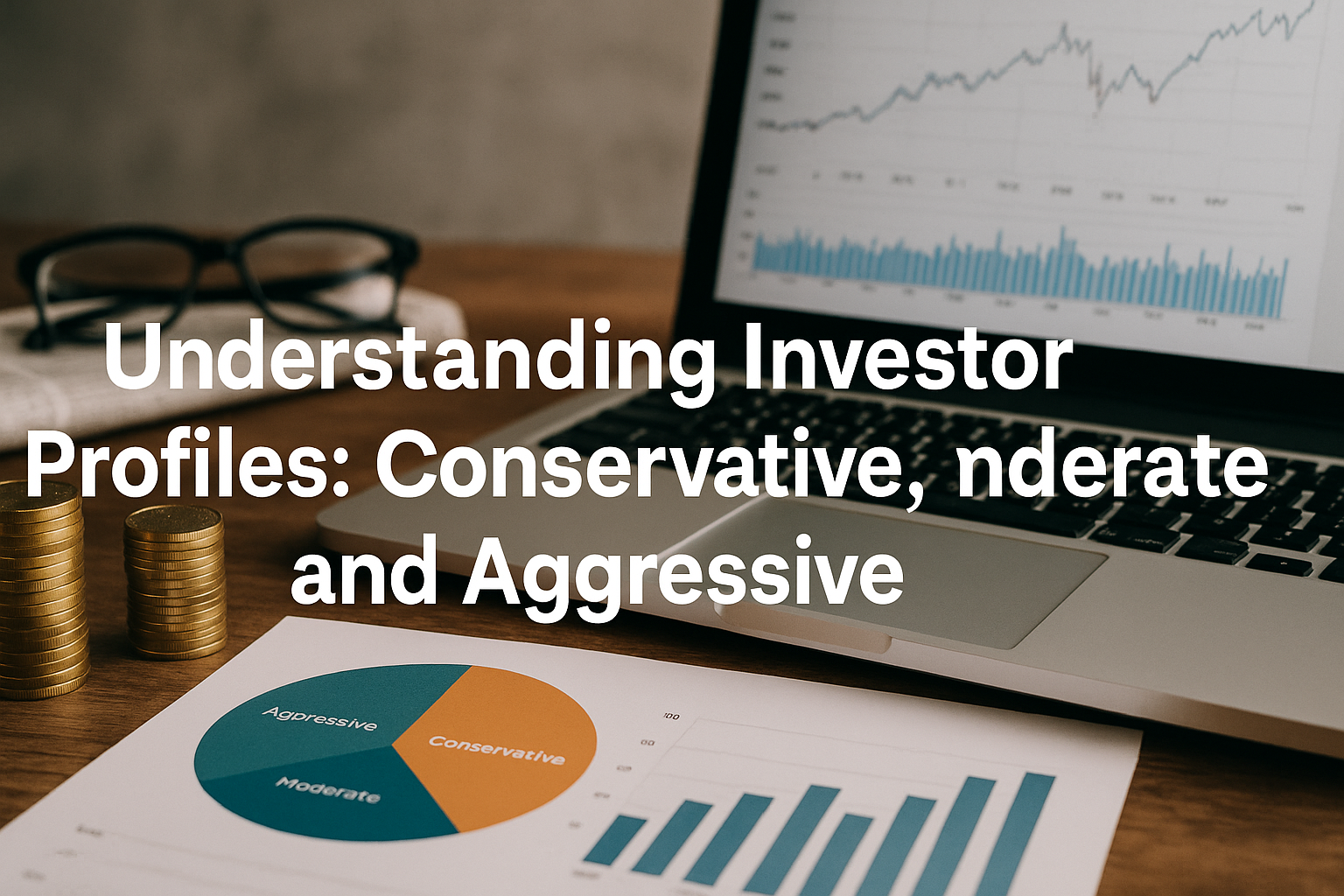When it comes to investing, there’s no one-size-fits-all approach. Each person has a unique financial situation, goals, and tolerance for risk. That’s why understanding your investor profile is one of the most important steps before putting your money into any asset. Whether you’re just starting your investment journey or looking to refine your strategy, knowing if you’re a conservative, moderate, or aggressive investor can make a world of difference.
This article will explain the key differences between these three profiles, help you assess your own, and guide you toward investment strategies that align with your comfort level and objectives.
What Is an Investor Profile?
An investor profile is a classification that helps determine the type of investment strategy most suited to a person’s financial goals, time horizon, and risk tolerance. Think of it as a roadmap that helps you make smarter, more consistent investment decisions.
Investor profiles are generally divided into three main categories:
- Conservative
- Moderate
- Aggressive
Each profile carries different levels of risk and return potential, and choosing the right one can prevent emotional decisions and financial losses.
The Conservative Investor
Who Are They?
A conservative investor is someone who prioritizes the preservation of capital over high returns. These individuals prefer low-risk investments and often avoid market volatility altogether.
Common Characteristics
- Low tolerance for risk
- Prefers safety over potential high returns
- Often close to retirement or saving for short-term goals
- Prefers predictable income streams
Typical Investments
- Treasury bonds and other government securities
- Certificates of Deposit (CDs)
- Fixed-income mutual funds
- High-yield savings accounts
Pros and Cons
Pros:
- Capital is generally safe
- Income is often stable and predictable
Cons:
- Lower returns over the long term
- May not outpace inflation
Conservative investing is ideal for those who value financial security and are uncomfortable with fluctuations in their investment portfolio.
The Moderate Investor
Who Are They?
Moderate investors strike a balance between risk and return. They are willing to take on a certain level of risk for better potential gains but still want to protect part of their capital.
Common Characteristics
- Medium tolerance for risk
- Invests with both growth and income in mind
- Usually saving for medium to long-term goals (5–10 years)
- Willing to endure moderate market fluctuations
Typical Investments
- A mix of stocks and bonds
- Balanced mutual funds
- Diversified ETFs
- Real estate investment trusts (REITs)
Pros and Cons
Pros:
- Potential for better returns than conservative portfolios
- Diversification helps manage risk
Cons:
- Exposed to moderate volatility
- Requires more active management and review
This profile suits those who want growth but still need a measure of stability in their investment journey.
The Aggressive Investor
Who Are They?
Aggressive investors are comfortable taking significant risks for the possibility of higher rewards. They typically have a long investment horizon and can endure periods of loss.
Common Characteristics
- High risk tolerance
- Long-term financial goals (10+ years)
- Often younger and financially secure
- Willing to accept volatility for greater returns
Typical Investments
- Individual stocks, especially small-cap or tech stocks
- Growth-oriented mutual funds
- Cryptocurrency (for some)
- International and emerging market equities
Pros and Cons
Pros:
- High growth potential
- Capitalizes on long-term market gains
Cons:
- High volatility and potential for losses
- Emotional discipline is required to stay invested during downturns
This type of investor needs to be psychologically prepared to see dramatic swings in their portfolio and still stay committed to their strategy.
How to Determine Your Investor Profile
Identifying your investor profile isn’t about labeling yourself based on age or income alone. It’s about understanding your comfort with risk, financial goals, and time frame. Here are a few steps you can take:
1. Assess Your Risk Tolerance
Ask yourself:
- How would I react if my investment dropped 20% in a month?
- Would I pull out my funds or stay the course?
- Do I prefer slow, steady growth or am I okay with ups and downs?
2. Define Your Time Horizon
- Are you investing for short-term goals (1–3 years), medium-term (4–9 years), or long-term (10+ years)?
- The longer your time horizon, the more aggressive you can afford to be.
3. Understand Your Financial Goals
Different goals require different approaches:
- Retirement (long-term): May allow more risk.
- House down payment (short-term): Safer investments preferred.
- College fund for a child (medium-term): Balanced portfolio ideal.
4. Consider Your Financial Situation
If you’re living paycheck to paycheck, taking big risks may not be wise. But if you have a solid emergency fund and stable income, you may have more flexibility.
5. Use Online Tools or a Financial Advisor
Many brokerage firms offer free risk assessment quizzes. You can also work with a financial advisor or consultant who can guide you in developing an investment strategy tailored to your profile.
Can Your Profile Change Over Time?
Absolutely! Investor profiles are not fixed. As your life circumstances change, so will your investment approach.
Here are some examples:
- A young, single professional may start as an aggressive investor.
- That same person might shift to moderate after starting a family.
- As retirement nears, they may become conservative to protect their savings.
It’s important to review your profile annually or whenever you face a major life change, such as:
- Marriage or divorce
- Birth of a child
- Change in job or income
- Health-related issues
- Retirement planning
Building a Portfolio That Matches Your Profile
Once you’ve identified your profile, the next step is to build a diversified portfolio that aligns with it. Here’s a rough guide for each type:
Conservative Portfolio Example:
- 70% Bonds
- 20% Cash or cash equivalents
- 10% Stocks
Moderate Portfolio Example:
- 50% Stocks
- 40% Bonds
- 10% Alternatives or real estate
Aggressive Portfolio Example:
- 80% Stocks
- 15% International equities or emerging markets
- 5% Bonds or cash
Note: These allocations are just examples. Every individual’s situation is unique.
Final Thoughts: Matching Strategy with Comfort
Understanding whether you’re a conservative, moderate, or aggressive investor is essential to long-term investing success. It ensures your portfolio reflects not just your financial goals, but also your emotional resilience and time horizon.
There’s no “better” profile—just the one that’s right for you. By choosing investments that match your comfort with risk, you’re more likely to stick with your plan through market ups and downs, avoid panic decisions, and ultimately achieve your financial goals.
Keep learning, keep adjusting, and most importantly—stay consistent.

